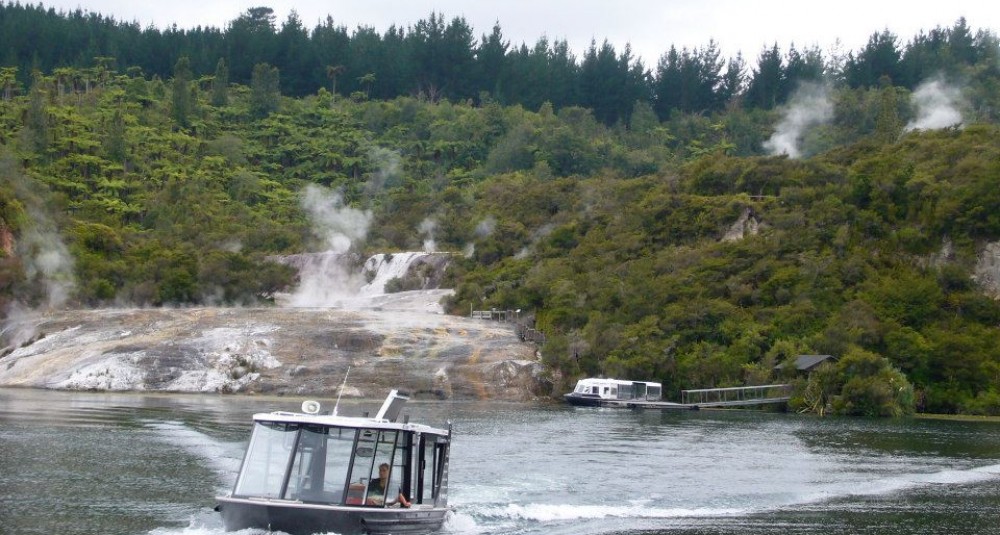Geothermal Energy– Steam and hot water that is extracted from geothermal reservoirs. This can be used for geothermal heat pumps, water heating, and electricity generation.
Geothermal Plant- A plant with the main driver being a steam turbine. The turbine can be driven either by steam from hot water, or by steam from natural sources such as geysers.
Geothermal Heat Pump– A heat pump that uses the constant temperature of the earth as the heat source in the winter, and a heat sink in the summer instead of the outside air temperature.
Conventional Hydrothermal – the development of a geothermal resource where levels of geothermal reservoir temperature and reservoir flow capacity are naturally sufficient to produce electricity.
Binary – geothermal power conversion technology that operates in a closed-loop system and therefore maintains zero emissions. Highly efficient nationwide potential.
Flash – geothermal power conversion technology in which high-pressure and temperature geothermal fluids are segregated into steam and water in a separator. As a result, pressure decreases.
Dry Steam – geothermal power conversion technology in which steam is taken directly from a geothermal reservoir and used to run turbines and a generator.
Enhanced Geothermal Systems (EGS) – the development of a geothermal system where hydraulic fracturing of the system can allow the production at a commercial level. EGS’s are engineered reservoirs created where there is geothermal energy but a lack of permeability. Fluid is injected into the earth‘s surface which causes pre-existing fractures to open again, creating permeability. Nationwide potential with engineered reservoirs 6-km to 8-km deep
Potential Capacity Additions (PCA) – the expected power plant’s estimated installed capacity.
Resource Capacity – the megawatt (MW) value of the total recoverable energy of a the subsurface geothermal resource.
Direct Use – use of geothermal heat with first converting it to electricity. Highest potential located in western United States, Alaska and Hawaii.
Closed-Loop System-A geothermal system where gases that rise from the well are injected back into the earth and are not exposed to the atmosphere.
Capacity Factor-The ratio of a power plant’s actual electrical output to the theoretical, maximum output of the plant for a given period of time.
Sources:
Matek, Benjamin. 2013 Annual US Geothermal Power Production and Development Report. Rep. Geothermal Energy Association, Apr. 2013. Web. 14 Apr. 2014. http://geo-energy.org/pdf/reports/2013AnnualUSGeothermalPowerProductionandDevelopmentReport_Final.pdf.
Matek, Benjamin, and Brian Schmidt. The Values of Geothermal Energy. Rep. Geothermal Energy Association and Geothermal Resources Council, Oct. 2013. Web. 14 Apr. 2014. www.geothermal.org/PDFs/Values_of_Geothermal_Energy.pdf
“Geothermal Glossary.” Geothermal Technologies Office. United States Department of Energy, 7 Oct. 2008. Web. 14 Apr. 2014. http://www1.eere.energy.gov/geothermal/glossary.html
“State Geological Surveys: Tapping Geothermal Energy in the 21st Century.” The Arizona Geological Survey. The Department of Energy Geothermal Technologies Program, n.d. Web. 14 Apr. 2014. http://www.azgs.az.gov/geothermal_ngds.shtml
“U.S. Energy Information Administration – EIA – Independent Statistics and Analysis.” Glossary. N.p., n.d. Web. 13 Apr. 2014
“Energy.gov.” Enhanced Geothermal Systems. N.p., n.d. Web. 14 Apr. 2014.<http://www.energy.gov/eere/ geothermal/enhanced-geothermal- systems-0>
“Geothermal Heat Pumps.” Energy.gov. N.p., n.d. Web. 14 Apr. 2014. <http:// energy.gov/energysaver/articles/ geothermal-heat-pumps>.
Co-Authors: Kyle Brennan, Jessica Ross, Allison Scoular
